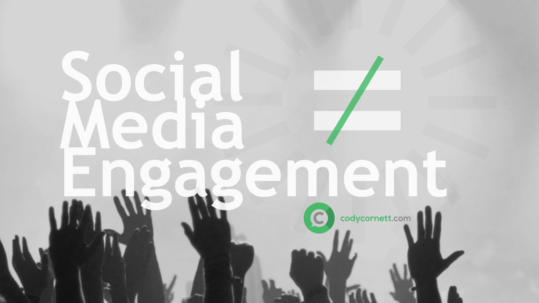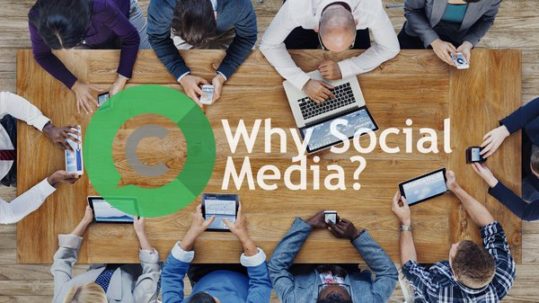
20 Oct Not All Social Media Engagement Is Created Equal
It isn’t enough for your business to simply exist in the social media universe. Cultivating customer engagement with your brand should be a top priority if you want your brand to remain relevant… or if you want your social media efforts to impact sales. Plus, it is “social” media after all. Social media engagement is vital. But with so many different social media channels, each offering unique types of engagement (likes, RTs, hearts, comments, shares, etc.), how can you know if the type of engagement you’re receiving is really helping?
As best-selling marketing author Jay Baer pinpoints, “The goal is not to be good at social media. The goal is to be good at business because of social media.” If this truly is your goal, it should influence how your brand looks at social media engagement. Not all social media engagement is created equal.
3 Levels of Social Media Engagement
Consider the example of a struggling musician for a moment. For fun, let’s call our musician, Chester Copperpot. Chester travels city to city, playing show after show in hopes of creating buzz for his newly released album, Slick Shoes. At the end of each show, he receives three primary reactions: 1) Nearly everyone stands and applauds, 2) some are moved enough to stick around and chat with him, and 3) a few are moved to the point of telling their friends about their new music discovery.
Okay, back to reality now. Do those three audience reactions have equal impact on Chester’s goal of generating buzz for his album? Not at all. The same is true for measuring social media engagement and its impact on your business. Let’s discuss…
Applause
Applause is important. It lets you know if what you’re sharing is appreciated or not. Whether you’re a musician performing on stage or a brand sharing useful content, applause is confirmation and approval of your efforts. In the social media world, applause is a: like, favorite, +1, heart, thumbs-up, etc. While important and positive, applause generally doesn’t offer reach beyond the post it was received within. It does little to push your message to more people.
Conversation
Conversation is also important, and it takes the level of intimacy a step further. A concert will be much more memorable for someone who talked with the artist after the show than it would be for someone who applauded then left. It’s similar when people have conversations with, and see the humanity within, their favorite brands on social. Conversation in the social media world is a: comment, reply, DM, etc. When conversation takes place on social media, it increases the chances for a couple of positive things to happen. First, deeper dialogue on a subject may develop, leading to interest and comments from more people. Secondly, a friend or follower of the commenter may also now see the post. Conversation can increase brand recall and expand brand reach.
Amplification
Amplification is the greatest form of engagement a band or brand can receive from its fans. When fans go beyond clapping and saying thanks, and they share your music or message with their closest friends, it leads to sales. Social media amplification is today’s word-of-mouth marketing, and is the source of social virality. Amplification is a: share, RT, mention, etc. These metrics are too important to simply be reported equally with applause and conversation under the label of “engagement”. Your brand should place more weight on amplification metrics.
All three levels of social media engagement are important and serve their unique purpose. However, the more conscious you are about the different types of social media engagement, the more impact social media can have on your brand’s bottom line business goals.
If you found this useful, let’s practice some amplification right now! Share it!
More?



